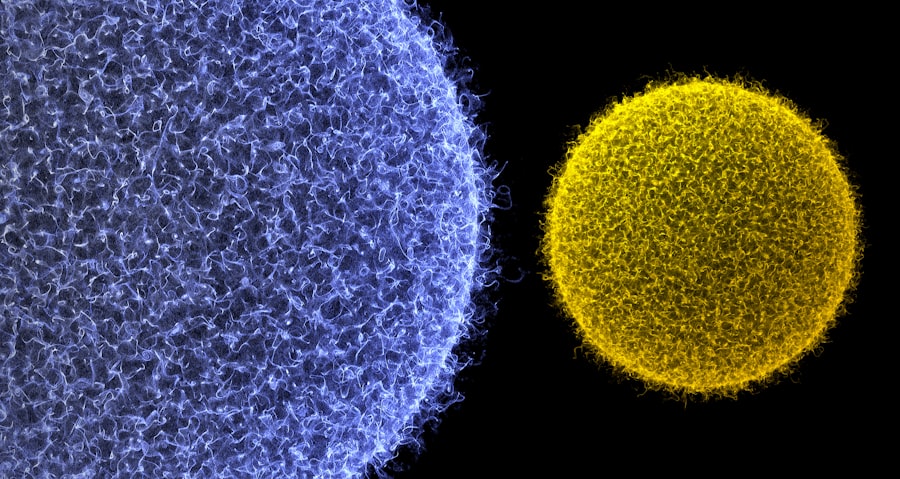Stem cell research has emerged as one of the most promising fields in modern medicine, offering the potential to revolutionize the treatment of a wide array of diseases and injuries. Stem cells are unique in their ability to develop into various cell types, which makes them invaluable for understanding human development and for developing new therapies. The fascination with stem cells lies not only in their regenerative capabilities but also in their potential to unlock the mysteries of complex diseases, providing insights that could lead to groundbreaking treatments.
As scientists delve deeper into the mechanisms of stem cells, they are uncovering new possibilities that could change the landscape of healthcare. The journey of stem cell research began in the late 20th century, with the first successful isolation of embryonic stem cells in 1981. Since then, the field has expanded rapidly, fueled by advances in technology and a growing understanding of cellular biology.
Today, stem cell research encompasses a variety of approaches, including the study of embryonic stem cells, adult stem cells, and induced pluripotent stem cells (iPSCs). Each type offers unique advantages and challenges, contributing to a rich tapestry of research that holds promise for treating conditions ranging from neurodegenerative diseases to spinal cord injuries.
Key Takeaways
- Stem cell research holds great promise for regenerative medicine, offering potential treatments for a wide range of diseases and injuries.
- There are different types of stem cells, each with unique potential for regenerating specific tissues and organs in the body.
- Stem cell research has already shown applications in regenerative medicine, including the treatment of heart disease, diabetes, and spinal cord injuries.
- Ethical considerations and challenges in stem cell research include the use of embryonic stem cells and the need for strict regulation and oversight.
- Current advances in stem cell therapy, ongoing clinical trials, and the role of government and regulatory agencies are shaping the future of regenerative medicine, offering hope for patients with unmet medical needs.
Types of Stem Cells and Their Potential
Stem cells can be broadly categorized into two main types: embryonic stem cells and adult stem cells. Embryonic stem cells are derived from early-stage embryos and possess the remarkable ability to differentiate into any cell type in the body. This pluripotency makes them particularly valuable for research and therapeutic applications.
For instance, researchers have explored their potential in generating insulin-producing cells for diabetes treatment or neurons for neurodegenerative diseases like Parkinson’s. The versatility of embryonic stem cells positions them as a cornerstone in regenerative medicine, although their use is often accompanied by ethical debates regarding the source of these cells. On the other hand, adult stem cells, also known as somatic or tissue-specific stem cells, are found in various tissues throughout the body, such as bone marrow, skin, and the brain.
Unlike embryonic stem cells, adult stem cells are typically multipotent, meaning they can differentiate into a limited range of cell types related to their tissue of origin. For example, hematopoietic stem cells from bone marrow can give rise to various blood cells, making them essential for treatments like bone marrow transplants. Recent advancements have also led to the discovery of more versatile adult stem cells, such as mesenchymal stem cells (MSCs), which can differentiate into multiple cell types and have shown promise in treating conditions like osteoarthritis and heart disease.
Applications of Stem Cell Research in Regenerative Medicine

The applications of stem cell research in regenerative medicine are vast and varied, with ongoing studies exploring their potential to treat a multitude of conditions. One of the most significant areas of application is in the treatment of degenerative diseases. For instance, researchers are investigating the use of stem cells to repair damaged heart tissue following a myocardial infarction.
Clinical trials have demonstrated that injecting stem cells into the heart can promote tissue regeneration and improve cardiac function, offering hope for patients suffering from heart failure. Another promising application lies in the field of neuroregeneration. Conditions such as spinal cord injuries and neurodegenerative diseases like amyotrophic lateral sclerosis (ALS) present significant challenges due to the limited capacity for natural repair in the nervous system.
However, studies have shown that transplanting neural stem cells can lead to functional recovery by promoting axonal regeneration and remyelination. Additionally, researchers are exploring the potential of iPSCs derived from patients’ own cells to create personalized therapies for conditions like Alzheimer’s disease, allowing for targeted treatment strategies that minimize immune rejection.
Challenges and Ethical Considerations in Stem Cell Research
Despite its immense potential, stem cell research is fraught with challenges and ethical considerations that must be navigated carefully. One of the primary ethical concerns revolves around the use of embryonic stem cells, which are obtained from human embryos. This raises questions about the moral status of embryos and whether it is ethically permissible to use them for research purposes.
Various countries have implemented regulations governing embryonic stem cell research, reflecting differing societal values and ethical perspectives. In addition to ethical dilemmas, scientific challenges also pose significant hurdles. For instance, ensuring the safety and efficacy of stem cell therapies is paramount before they can be widely adopted in clinical practice.
Issues such as tumorigenicity—where transplanted stem cells may form tumors—must be thoroughly investigated. Furthermore, the complexity of differentiating stem cells into specific cell types poses technical challenges that require advanced methodologies and rigorous testing protocols. Addressing these challenges is essential for advancing the field and gaining public trust in stem cell therapies.
Current Advances and Breakthroughs in Stem Cell Therapy
Recent years have witnessed remarkable advances in stem cell therapy that underscore its transformative potential. One notable breakthrough is the development of iPSCs, which allow researchers to reprogram adult somatic cells into pluripotent stem cells. This innovation not only circumvents some ethical concerns associated with embryonic stem cells but also enables personalized medicine approaches.
For example, scientists can generate iPSCs from a patient’s skin cells and then differentiate them into specific cell types for transplantation or drug testing, paving the way for tailored therapies that align with individual patient needs. Moreover, advancements in gene editing technologies such as CRISPR-Cas9 have opened new avenues for enhancing stem cell therapies. Researchers are now able to precisely edit genes within iPSCs or other stem cell types to correct genetic defects or enhance their therapeutic properties.
This has significant implications for treating genetic disorders like sickle cell anemia or cystic fibrosis by potentially correcting the underlying genetic mutations at their source. The combination of gene editing with stem cell technology represents a powerful synergy that could lead to innovative treatments for previously untreatable conditions.
Clinical Trials and Future Prospects in Regenerative Medicine

As the field of stem cell research continues to evolve, numerous clinical trials are underway to assess the safety and efficacy of various stem cell therapies across a range of conditions. These trials are crucial for translating laboratory findings into real-world applications that can benefit patients. For instance, ongoing studies are investigating the use of MSCs for treating conditions such as Crohn’s disease and multiple sclerosis, with preliminary results indicating promising outcomes in terms of symptom relief and disease progression.
Looking ahead, the future prospects for regenerative medicine powered by stem cell research appear bright. The integration of advanced technologies such as artificial intelligence and machine learning is expected to accelerate discoveries in this field by enabling researchers to analyze vast datasets more efficiently and identify potential therapeutic targets. Additionally, collaborations between academic institutions, biotech companies, and regulatory agencies will be essential for fostering innovation while ensuring patient safety and ethical compliance.
The Role of Government and Regulatory Agencies in Stem Cell Research
Government bodies and regulatory agencies play a pivotal role in shaping the landscape of stem cell research by establishing guidelines that govern its conduct. In many countries, organizations such as the U.S.
These regulatory frameworks are designed to protect public health while fostering scientific innovation. Moreover, funding agencies often provide grants and resources to support research initiatives aimed at advancing our understanding of stem cells and their applications. For instance, organizations like the National Institutes of Health (NIH) in the United States allocate significant funding toward stem cell research projects that align with public health priorities.
By investing in this area, governments can stimulate scientific progress while addressing pressing medical needs within society.
The Promise and Potential of Stem Cell Research for Regenerative Medicine
The promise of stem cell research lies not only in its potential to develop groundbreaking therapies but also in its ability to enhance our understanding of human biology and disease mechanisms. As researchers continue to explore the intricacies of stem cells and their applications in regenerative medicine, we stand on the brink of a new era in healthcare that could transform how we approach treatment for a myriad of conditions. The ongoing collaboration between scientists, clinicians, regulatory agencies, and society at large will be crucial in navigating the challenges ahead while harnessing the full potential of this remarkable field.
With continued investment and ethical consideration, stem cell research holds the key to unlocking innovative solutions that could improve countless lives around the globe.
In the realm of regenerative medicine, the potential of stem cell research continues to be a focal point for innovation and discovery.
You can read more about this in the article on best software for project management.
FAQs
What are stem cells?
Stem cells are a type of cell that has the ability to develop into many different types of cells in the body. They can divide and produce more stem cells, or differentiate into specific cell types such as muscle cells, nerve cells, or blood cells.
What is regenerative medicine?
Regenerative medicine is a branch of medicine that focuses on repairing, replacing, or regenerating damaged or diseased cells, tissues, or organs to restore normal function. It often involves the use of stem cells to promote healing and regeneration.
How is stem cell research used in regenerative medicine?
Stem cell research is used in regenerative medicine to explore the potential of using stem cells to repair or replace damaged or diseased tissues and organs. This can involve using stem cells to stimulate the body’s own repair mechanisms, or transplanting stem cells to replace damaged cells.
What are the potential applications of stem cell research in regenerative medicine?
Stem cell research has the potential to be used in regenerative medicine for treating a wide range of conditions, including heart disease, diabetes, spinal cord injuries, Parkinson’s disease, and more. It also holds promise for growing replacement tissues and organs for transplantation.
What are the ethical considerations surrounding stem cell research?
One of the main ethical considerations surrounding stem cell research is the use of embryonic stem cells, which involves the destruction of human embryos. This has led to debates about the moral status of the embryo and the ethical implications of using embryonic stem cells for research and therapy.

